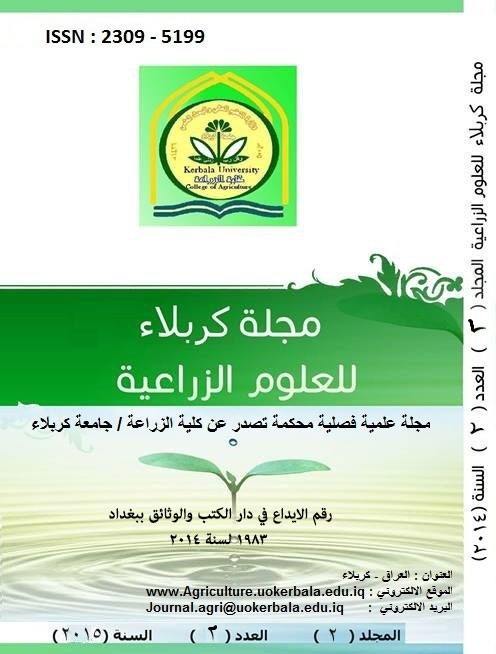-
DOI:
https://doi.org/10.59658/jkas.v2i4.38Keywords:
برغوث الماء , مبيد Abate, مبيد AbateAbstract
The aim of the present study is study the toxic effects of pesticide Abate 4% EC utilized in the aquatic environment against Mosquito larvae on the non-target organism Daphnia magna which related to order Cladocera and Family Daphnidae from the toxic aspect
The results of Abate treatment at a period of partial exposure showed reduction on number of broods and the juveniles number . And results showed that using of the insecticide Abate lead to reduce in the number of brood and the juveniles number for F1 individuals in all cases of treatments (absent of oxygen , present of oxygen , addition of some suspension materials ).
Downloads
Published
How to Cite
Issue
Section
License
Copyright (c) 2015 Copyright (c) 2024 is the Author's article. Published by the Journal of Kerbala for Agricultural Sciences under a CC BY 4.0 license

This work is licensed under a Creative Commons Attribution 4.0 International License.
Licensing Terms
All articles are published under a Creative Commons License and will be directed to the Creative Commons Attribution 4.0 International License (CC BY 4.0) That permits use, distribution, and reproduction in any medium, provided the original work is properly cited. This license also allows the work to be used for commercial purposes.
Use by both non-commercial and commercial users
This content is licensed under a Creative Commons Attribution 4.0 International (CC BY 4.0) license, permitting use by both non-commercial and commercial users. Individual users may access, download, copy, display, and redistribute the articles to colleagues, as well as adapt, translate, and text- and data-mine the content, subject to the following conditions:
- The author's moral rights, including the right of attribution and the right to protect their work from derogatory treatment, are respected.
- Where content in the article is identified as belonging to a third party, users must ensure that any reuse complies with the copyright policies of the owner of that content.
- If the article content is reused for research or educational purposes, users should maintain a link to the appropriate bibliographic citation, including the DOI and a link to the published version on the journal's website.

